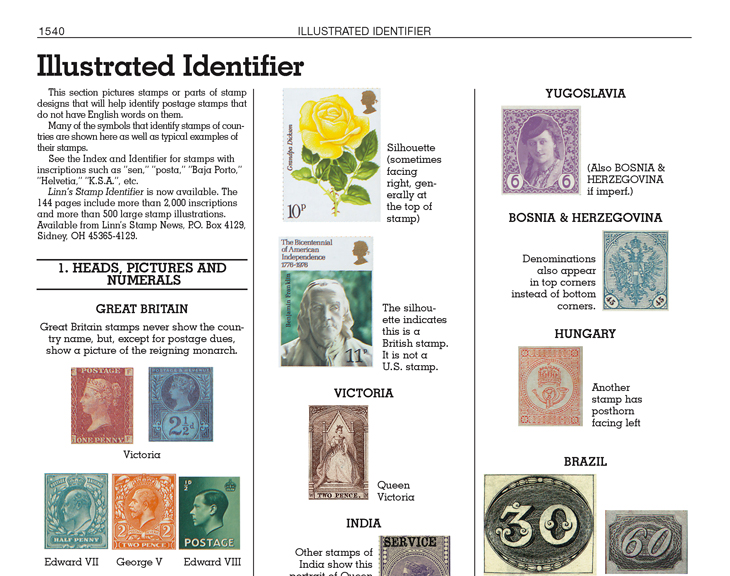World Stamps
Scott indexes make using the catalogs a pleasant and successful experience: Editor’s Insights

By Donna Houseman
In the June 6 issue of Linn’s, I encouraged readers to carefully read the introduction found in the Scott catalogs.
Equally useful is the appendix in the back of the six volumes of the Scott Standard Postage Stamp Catalogue and the Scott Classic Specialized Catalogue of Stamps and Covers.
The appendix includes an extensive index of the catalogs. I’d be willing to bet that no philatelic catalog includes as many listings in the index as are included in the Scott catalog indexes.
Connect with Linn’s Stamp News:
Sign up for our newsletter
Like us on Facebook
Follow us on Twitter
The indexes and the Illustrated Identifier are designed to help the catalog user find stamps among the hundreds of thousands of listings.
As an example, on page 30 of this issue a reader seeks information on a puzzling stamp in a letter to Collectors’ Forum. The stamp has the letters “A” and “R” in the top corners. The reader has already determined that his item is a 25-para stamp from Montenegro.
If he had not determined the country of origin, he could have looked for “A R” in the index. The index of any of the Standard catalogs would have led him to Vol. 4. In Vol. 4 of the 2016 Standard catalog, the index references page 1386, where the 25pa Acknowledgment of Receipt stamp is listed as Scott H4.
The indexes of all other volumes of the 2016 edition include the “A R” listing with a reference to Vol. 4. Page numbers in each index refer only to the catalog in which that index appears.
The index for the Scott Classic Specialized catalog is even more extensive. It includes an index of foreign usages of pre-stamp postal markings, and an index of stamps of parent nations used in colonies and other nations, for example, Great Britain used in Aden.
As the introduction to the Illustrated Identifier explains, this useful guide “pictures stamps or parts of stamp designs that do not have English words on them.”
The identifier helps the user determine the country of origin of difficult-to-identify stamps. In many instances, the country name is shown near a representative stamp to set the country name apart from other inscriptions on the stamp.
The Scott Specialized Catalogue of United States Stamps and Covers does not include an index as an appendix, but instead features a detailed Subject Index of Regular, Commemorative & Air Post Issues. The U.S. Specialized catalog also includes a very helpful Identifier of Definitive Issues, complete with pictures and Scott numbers for each design.
The various indexes serve as a guide to the listings included in the Scott catalogs. Catalog users are encouraged to use these features on a regular basis. They will make using the catalogs a much more enjoyable and successful experience.
More editorial insights from Linn's:
New U.S. stamp market report makes debut
Linn’s Editorial Advisory Board plans panel discussion at World Stamp Show
Introduction to Scott catalogs contains valuable information for every collector
MORE RELATED ARTICLES
Headlines
-
US Stamps
Oct 7, 2024, 3 PMMcMurtrie dismissed as APS education director following Sept. 21 arrest
-
US Stamps
Oct 7, 2024, 12 PMVasiliauskas named president of Mystic Stamp Co.
-
US Stamps
Oct 6, 2024, 5 PMApgar souvenir card available
-
US Stamps
Oct 6, 2024, 4 PMFirst Continental Congress and U.N. stamps receive Scott catalog numbers





